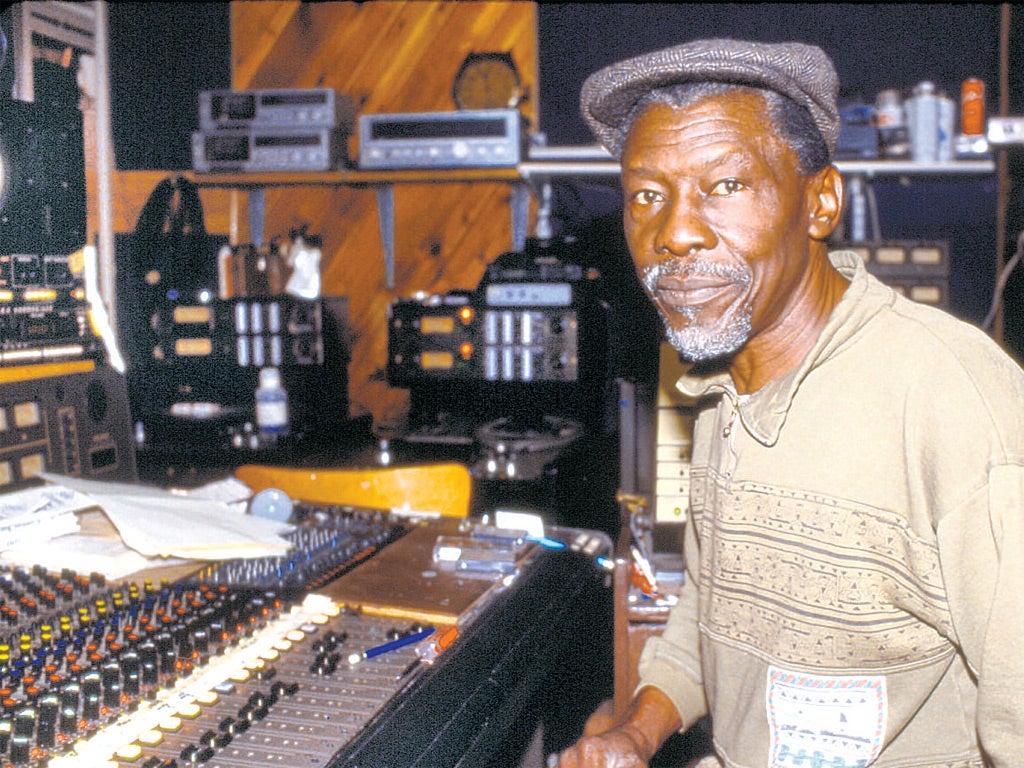Off-beat images of a pioneer of Jamaican ska
The glorious LPs of 'Sir Coxsone' Dodd are being celebrated, says Ian Burrell

The sun glittering over the Caribbean, bottles of cold Red Stripe on a table, a dancing couple jerking their bodies to the brassy new rhythms of ska and a speaker-box bearing the name of a relatively-unknown Yorkshire medium-pace bowler.
It was all there in that first album-cover: the raw power of a new style of music, the energy and passion of an emerging West Indian nation, an instinctive and effortless cool and an undeniable if rather ambiguous connection to the United Kingdom.
This was the image of Studio One, Jamaica's greatest recording studio, and the creative vision of one man, Clement Dodd. The word "Coxsone", inscribed onto the speaker boxes on the studio's first long-player, All Star Top Hits, highlights Dodd's island-wide status as the pioneering sound-system operator "Sir Coxsone Downbeat the Ruler". That nickname "Coxsone" was inspired, bizarrely, by a short-tempered Yorkshire seamer called Alec Coxon, on whom Dodd, who died in 2004, modelled himself as a schoolboy cricketer in the Forties, when Jamaica was under British imperial rule. As much as Bob Marley and Burning Spear, both of whose early music he produced, Dodd deserves to be known as the father of modern Jamaican music, which emerged in the run-up to independence in 1962. But his legacy is as much a treat for the eyes as it is for the ears.
"The Studio One record sleeves are a visual equivalent to the sound of the music being released," says Stuart Baker of London's Soul Jazz records, who has turned Dodd's back-catalogue of album covers into a coffee-table book which beautifully presents a period of intense creativity and excitement. "They capture the energy and vibrancy, the national pride and the fun." It was the emergence of ska which signified the island's new confidence.
"The history of Studio One is essentially the history of Jamaican independence and coincides with the birth of Jamaican music," says Baker of the way that Dodd – who had schooled himself in jazz and blues while working as a migrant cane-cropper in the southern states of America – seized upon the opportunity that ska provided in the early Sixties. The Studio One story is meticulously told in an introduction to the Soul Jazz book written by Steve Barrow.
To Baker, the boldness and originality of the album designs illustrate a music form in which star practitioners such as trombonist Don Drummond taught themselves from American jazz sheets ordered through the post. "There's a rawness to the covers – maybe it was not knowing the rules that allowed them to not act by them."
Jackie Estick and O'Neal Nanko are little known among even obsessive fans of Jamaican music and yet their work has left a lasting impression. Estick, the designer of so many early Studio One covers, was a trusted member of Dodd's team at the Brentford Road building and his name frequently appears on albums for his backing vocals. "The ska covers are so vibrant, they're saying 'Look at me! Look at me!'," adds Baker.
Nanko's time came in the following decade with the arrival of the bass-heavy instrumental style, dub. "There's a bluntness to these designs that's very striking and very unusual," says Baker. "I think he has a unique approach." Many of these albums were distinctive because of Studio One's use of a basic silk-screen printing process.
To British fans of ska and reggae, such as Ian McCann, now editor of Record Collector magazine, the simplicity of Studio One's packaging made it stand apart in record shops.
Enjoy unlimited access to 100 million ad-free songs and podcasts with Amazon Music
Sign up now for a 30-day free trial. Terms apply.
ADVERTISEMENT. If you sign up to this service we will earn commission. This revenue helps to fund journalism across The Independent.
Enjoy unlimited access to 100 million ad-free songs and podcasts with Amazon Music
Sign up now for a 30-day free trial. Terms apply.
ADVERTISEMENT. If you sign up to this service we will earn commission. This revenue helps to fund journalism across The Independent.
"They had that visual appeal but it was also tactile – I've seen people getting them and running their hands over them," he says of that silk-screen finish. McCann recalls one purchase of an album which he discovered had been printed on the inside of an old Engelbert Humperdinck LP and glued back together. "It was a cottage-industry ethic and that made it appealing because you never quite knew what you were going to get."
Masterminding the whole process was Coxsone, who frequently set up fresh record labels with new logos because radio stations complained that Studio One was flooding the airwaves. Having set up his mighty sound-system to increase beer sales at his mother's liquor store, he brought the same entrepreneurial spirit to the music business. "Mr Dodd was like a one-man industry," says McCann. "He was pressing the records and printing them, he was recording them and distributing them. I know for a fact he took some of the photographs on the early sleeves as well. They did things as cheaply as possible but still you got something beautiful out of it."
'The Album Cover Art of Studio One Records' will be published by Soul Jazz Books at £30 on 24 October. There will also be an accompanying CD, 'The Legendary Studio One Records'
Join our commenting forum
Join thought-provoking conversations, follow other Independent readers and see their replies
Comments